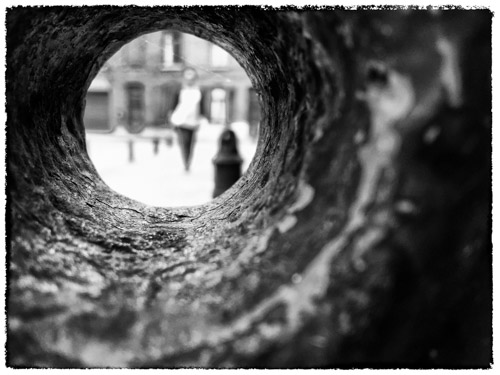![]()
![]()
Some of my favorite pictures have been taken with a simple point-and-shoot camera and a smartphone.
I mostly use a professional camera now, but I still carry my trusted iPhone. Regardless of what photographic equipment one uses, I’ve found that you have to learn the strengths and limitations of that camera system.
Even professional cameras have limitations. One that comes to mind is the limitation of their lenses. Sure, the lenses of the professional cameras can produce spectacularly sharp images, but these lenses are more highly specialized and not as adaptable to different uses. It’s impossible to find a professional camera lens that can take a normal picture of a family gathering, a telephoto tourist picture, as well as a macro shot of a flower. But most smartphones can do all of three with the same lens with no problems. The images may not be as sharp as with a professional set-up, but sometimes convenience is king.
The picture above is one example of a shot which would have been very difficult and very expensive to make with a professional camera, requiring a specialized miniature macro lens.
I was walking with my wife and her sister when I noticed a rough, cast-iron post which the city sometimes uses to string chains to block cars from parking or driving in certain areas.
There were no chains in the area we were walking and I thought it might be cool to take a picture through the hole in the top of the post, to show the very rough texture inside. The hole was no more than one inch (one centimeter) across and it would have been impossible for me to make that picture with a camera using a standard professional lens. So I took out my iPhone and I was able to get the full lens into the hole and I made some test pictures to make sure the concept worked.
The model, my sister-in-law, wanted a picture of herself so she posed and I made the picture making sure the focus was on the texture and she was a blurred background image. Everyone who saw the picture, including the model, thought I was a bit nuts and wondered what I was thinking by blurring the model and focusing on the macro-level texture of the hole. I assured them it was intentional and not an accident.
If you look at the picture closely, there are several photographic elements in there which leave it up to the viewer’s imagination about the subject of the picture. The ambiguity is made more pronounced by several elements: the prominent texture of the hole; the varied dark and light elements in the hole; the bright circle; two leading lines which brings the eyes to the model; a couple of spiderwebs framing the model; and of course the blurred, posing model herself.
Frankly, what I most love about this picture is the intentional ambiguity of the subject matter. Is the subject the texture of the hole or is it the model? I leave that up to you to decide.

